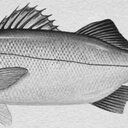Effects of dietary DHA and α-tocopherol on bone development, early mineralisation and oxidative stress in Sparus aurata (Linnaeus, 1758) larvae.
Sleutelwoorden
Abstract
DHA deficiency has been related to skeletal malformations in fish, but high DHA levels have produced controversial results that could relate to the oxidative status of fish tissues in the different reports. In the present study, gilthead seabream (Sparus aurata) larvae were fed deficient, adequate or high DHA levels, or high DHA levels supplemented with the antioxidant α-tocopherol. Larvae fed deficient DHA levels tended to be smaller, and showed the highest incidence of urinary bladder calculi, lordosis and kyphosis and the lowest number of mineralised vertebrae for any given size class. Elevation of dietary DHA increased larval growth and significantly enhanced the expression of the insulin-like growth factor 1 (IGF-1) gene. However, a DHA level increase up to 5 % raised the degree of lipid oxidation in larval tissues and deformities in cranial endochondral bones and in axial skeletal haemal and neural arches. The increase in dietary α-tocopherol supplementation in high-DHA feeds reduced again the occurrence of skeletal deformities. Moreover, the expression of genes coding for specific antioxidants such as catalase, superoxide dismutase or glutathione peroxidase, which neutralised reactive oxygen substances formed by increased dietary DHA, was significantly decreased in larvae fed high α-tocopherol levels. These results denoted the importance of DHA for early bone formation and mineralisation. Low dietary DHA levels delay early mineralisation and increase the risk of cranial and axial skeletal deformities. Excessive DHA levels, without an adequate balance of antioxidant nutrients, increase the production of free radicals damaging cartilaginous structures before bone formation.




